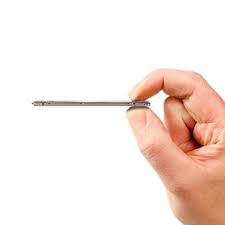Why thin disks don't matter


The work of analyst Jim Porter, founder of Disk/Trend, showed that the basic disk strategy for the last 50 years was increase areal density and shrink drive size. While this seems simplistic – who couldn't see smaller disk drives coming? – it was enough to disrupt several generations of disk drive vendors.
Out of more than 200 disk drive manufacturers, since 1982 only two vendors – IBM and Seagate – managed to survive two generations of drive shrinkage. From 14 inch to 9 inch to 8, 5.25 and 2.5 inch drives, each shift killed profitable drive manufacturers who could not adapt to a smaller form factor.
The industry was poised back in 2000 to move to a new and even smaller form factor, the 1.8 inch disk drive. Several were marketed and shipped but the advent of NAND flash stopped the 1.8 inch drive cold.
So having exhausted the possibilities of the X and Y-axis, the industry has moved on to the Z-axis: making thinner drives. They hope it does that thin drives will help them hang onto the mobile device market, but it won't.
Featured
The simple fact is that disk drives – even 2 1/2 inch disk drives – long ago overshot the storage requirements of most consumers. Capacity can be reduced by making drive thinner but it doesn't fix the problem of perceived fragility, power hunger and form factor inflexibility.
While fragility isn't a big problem today - Seagate's 5mm drive has a 400G operating shock spec - the 1.48 watts spec'd during seeks and the .48 watt idle consumption will mean a 15%-25% battery life hit on a 10 hour run time tablet. Some people will want the 500GB capacity - power users who'll run the battery down even faster - but most consumers don't care and won't pay the extra dollars required for more capacity at the cost of a shorter battery life.
If, perchance, it did start getting traction, Apple has the margin to drop larger capacities from the current $100 for the 1st 16GB option and $200 for the 48GB option. They probably pay ≈$5 for 16GB of flash.
The future
Drive vendors are already seeing the future, even as they fight to keep disks relevant to the mobile revolution. Here's what it looks like:
- External storage. WD an Seagate's management have been pleasantly surprised at the rapid growth and higher margins of external storage products. They need to continue the consumer focus while extending up to the $40k (fully loaded) price band.
- Hybrid drives. Notebooks aren't going away even though sales are dropping. Hybrid disk/flash drives will be successful there, as will the 5mm drive with a driver that integrates mobo flash into a single virtual drive.
- Specialized drives. HGST/WD's helium-filled server drive will be joined by a Toshiba version for Internet data centers. Seagate's announcement that they've sold over a million shingled magnetic recording (SMR) drives points to a long-overdue move into the archive disk market.
Other latent niches are waiting to be discovered once senior management realize that the old disk market - huge sales to PC vendors and high-margin sales to array vendors - isn't the future.
The Storage Bits take
The technology in disk drives is breathtaking. Drive vendors are rightfully proud of what they've achieved since the 5MB RAMAC - at $3,200 per month! - shipped in 1957.
Disk drives aren't going away - there is no economic substitute for bulk random access storage - but with PC demand dropping and 15k drives losing out to SSDs, the old business models are toast.
The 5mm drive is a good try, but don't expect much traction. Flash storage dominates the mobile segment and will continue to do so until something better comes along. Something better that isn't a disk.
Comments welcome, of course. Would you pay extra for a 500GB tablet that had a 20% shorter battery life? Why?